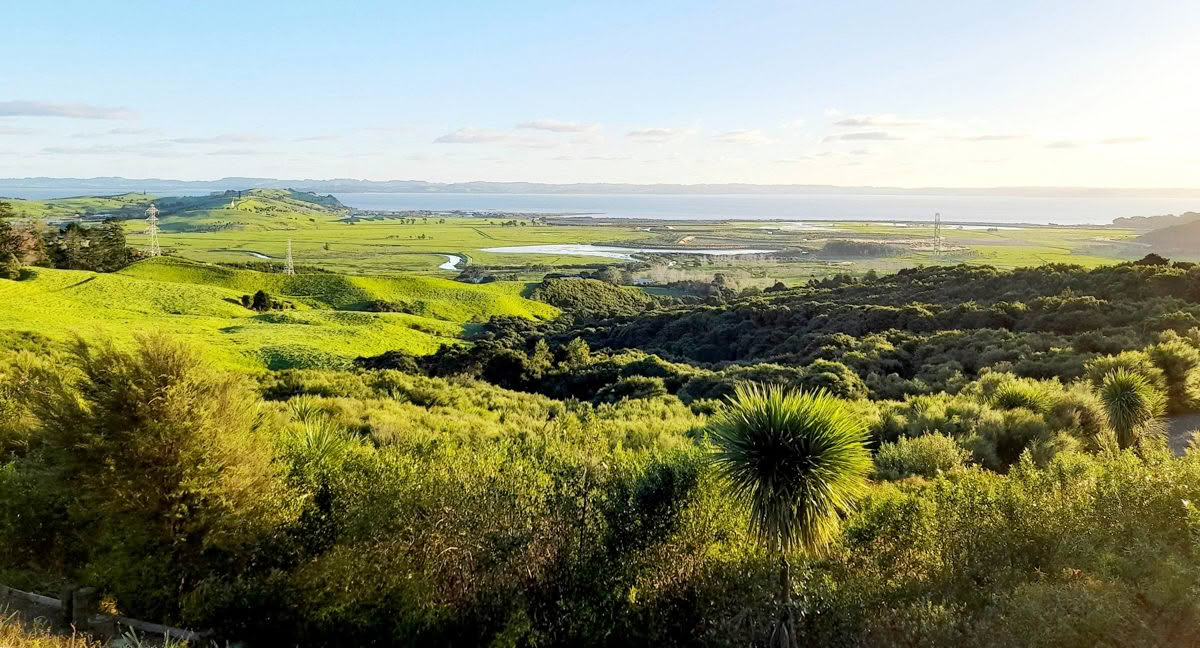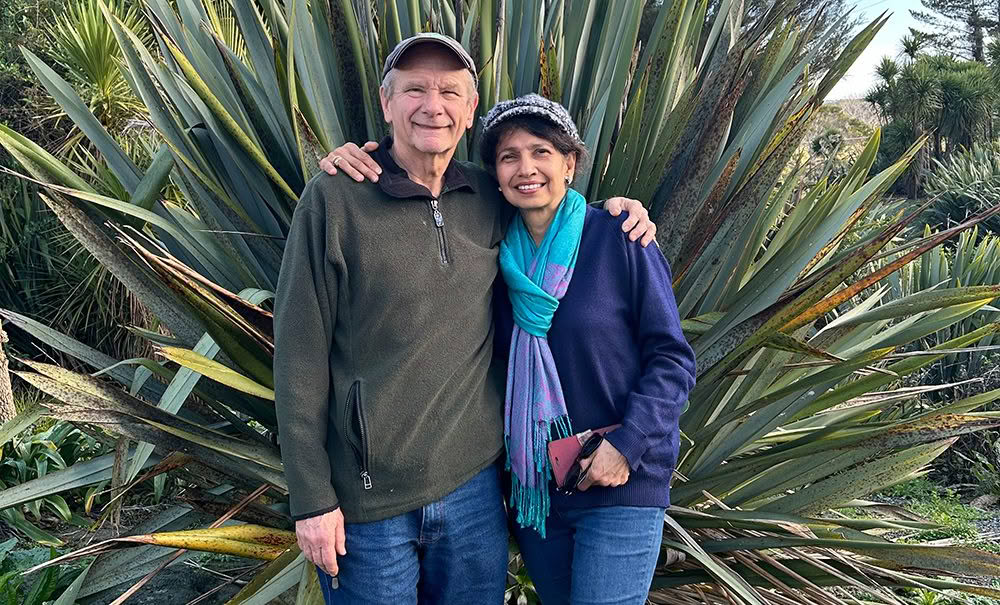A native haven
The goal of building a retreat for people from all walks of life to share their views was overtaken by a plan to afforest a large chunk of hilly land west of Auckland.
Words Kate Coughlan

A great deal of hard slog, along with considerable bursts of sheer magic, explains how this pair of internationally successful accountants (one a Parsee, born and educated in Asia, and the other from Cleveland, Ohio) managed to convert farmland to native forest in under a decade.
A tall canopy of mānuka, kānuka, hoheria, karamū, tī kōuka, makomako, māhoe and other native trees shades visitors wandering the seven kilometres of tracks and roads through the lush CUE Haven native forest today, enjoying its flourishing understory of self-seeded native ferns, its noisy native birds and the busy stream dancing down its gullies. It is a massive achievement for such a short time.
‘We are blessed, blessed, blessed,’ says Mahrukh Stazyk of the thousands of individuals and numerous organisations who over 16 years have supported the restoration of CUE Haven by volunteering their time, energy and skills, and donating money or giving grants. They have all had a hand in creating the native nature reserve it is now.
‘Being former accountants has its uses,’ says Mahrukh’s husband Thomas of the detailed planning that harnessed the energy of those 5,000-plus volunteers who’ve helped on the project since 2008. ‘Mahrukh is a good organiser, and we have a lot of spreadsheets.’
The couple had initially planned to establish a retreat ‘to cultivate understanding and enlightenment (CUE) by bringing people together to share ideas and learn from
each other’.
The couple, who met in London at a work function in 1990, decided to give up their high-stress corporate lives in 2001 and moved to New Zealand where Mahrukh had lived and worked in the 1980s; and where Thomas, after his first visit, declared that he’d live one day.
They stepped aside from their hectic work schedules and settled into Point Chevalier on Auckland city’s western side, to focus on their health, further education, and improving mutual respect and understanding among their fellow citizens. And, to that end, they purchased steep grassy paddocks looking west to the Kaipara Harbour on which they proposed to build their retreat.
A useful attribute of how accountants see the world is their belief in the value of planning. As Mahrukh and Thomas assessed the proposed building of 30,000 houses in west Auckland, they saw a future risk of subdivision to whatever they created.
This disturbing thought coincided with disconcerting news from the farmer grazing their land that the stream was clogging up and not providing enough water for the stock. It needed riparian planting for protection and as they began planning this work, their thinking began … would the community benefit more from access to a native reserve than from a retreat?
The more they learned about the value of forest reserves, the more committed they became to the new plan of creating one for generations to enjoy. A plan that has been realised with beautiful – and restorative – results: 24 hectares of native trees, a clean flowing stream home to kokopu, inanga and koura, and a facility open to community and school groups. Students visit for field trips and research, migrant community groups for their annual community celebrations, and open days and Māori cultural days are supported by the local Ngāti Rongo hapū, all created by volunteers of different ethnicities and nationalities.
‘We set out to cultivate understanding and enlightenment where people from diverse backgrounds would interact, share ideas, learn to disagree without being disagreeable, find shared values and work towards creating a better world for all,’ says Thomas. ‘CUE Haven has transformed not only from a farm to a native forest reserve, but has become a community space where diverse groups of people now come together to engage with nature and each other, to enjoy, learn about and celebrate New Zealand’s natural, cultural and historical heritage. We achieved our goal, albeit differently.
‘So many good people and organisations have contributed so very generously and need to be acknowledged and celebrated. CUE Haven is an excellent example of individuals, the public and private sectors all working together for the common good, to develop something special and leave a legacy for generations to come.’

FAST FACTS
- – 24 hectares of a dairy farm converted to drystock grazing to the east of the inner Kaipara Harbour.
- – 1 km long headwater stream (Wai Mātauranga) feeding into Kaipara Harbour.
- – 2008 – planting began on the stream edge to improve water quality.
- – 5,000+ volunteers have given their time, energy, skills and expertise.
- – 2017 – the goal is achieved with the entire property restored with fast-growing
native trees. - – 170,000+ trees planted so far and infill planting of long-living canopy trees is continuing.
- – 3+ km of access roads established.
- – 3+ km of walking tracks and boardwalks built by volunteers.
- – 2017 – CUE Haven, the restored land and a 12-bed accommodation block for volunteers, gifted to the CUE Haven Community Trust, a New Zealand-registered charity.
- – CUE Haven Endowment fund set up to provide for future maintenance so visitors do not have to pay an entry fee.
- – 2020 – community assists with the construction of viewing platform, Te Rite o Taranaki, offering panoramic views of the CUE Haven reserve and Kaipara Harbour.

